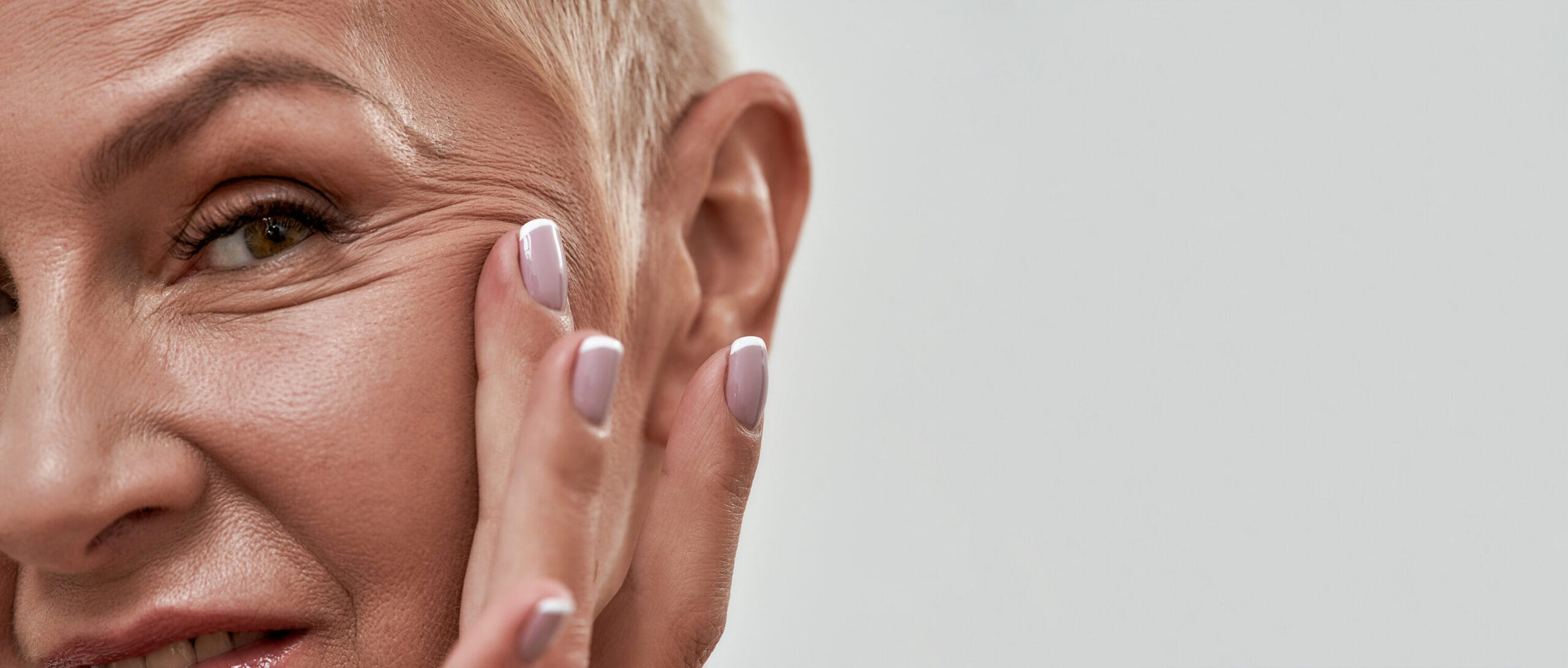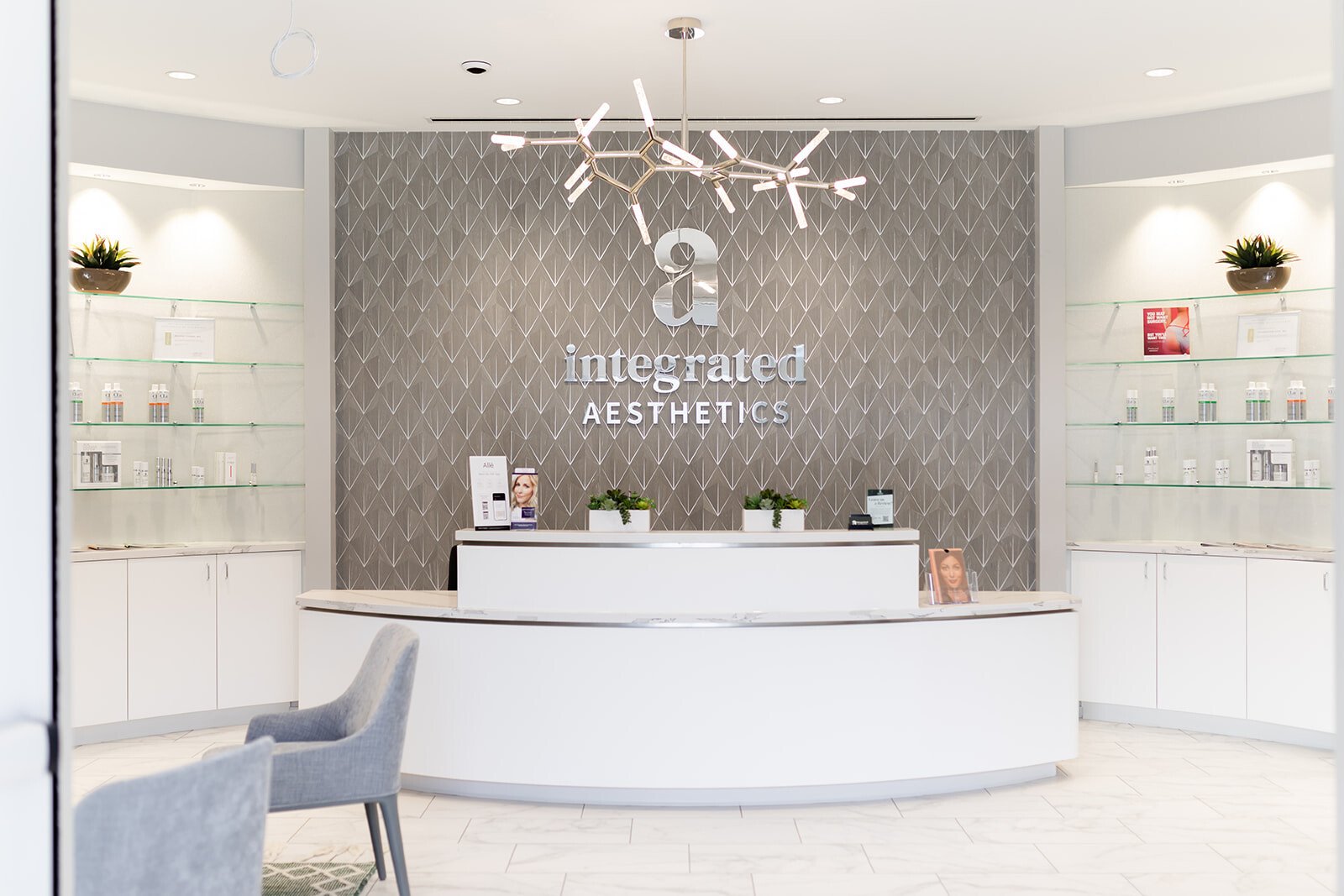Do you find that you look tired, even when you have had a good night’s sleep? Or worse, are people telling you that you look exhausted?
The area around the eyes, or the periorbital region, tends to age first and most dramatically. The periorbital region includes the brow, temples, eyelids, and the under-eye area. The periorbital skin is very delicate and is subject to a lot of shear stress from eyelid movement, squinting, and smiling. For this reason, it tends to age more quickly than the rest of our face.
In this blog, we delve into concerns such as temple hollowing, brow position, crow’s feet, droopy lids, under-eye bags, and dark circles. We will explore the root causes, including collagen loss, bony changes, muscle changes, and gravity, and how those factors contribute to periorbital aging.
Common Concerns:
The following are common signs of periorbital aging:
- Brow descent
- Temporal hollowing/recession
- Crepey skin, fine lines, and wrinkles
- Discoloration or ‘dark circles’
- Hollowing of the upper and lower eyes
- Puffiness and under-eye bags
- Skin laxity and sagging around the eyes.
Causes of Aging Eyes:
Understanding the root causes of periorbital aging is essential in formulating effective treatment strategies. These causes include:
- As we age, the volume in the temples is compromised by a decrease in muscle and fat. This results in hollowing of the temples and loss of support in the outer brow region.
- Our brows will also lose volume and support as we age resulting in a downward descent of the brows as we get older. The heavier/lower the appearance of the brow, the more upper lid laxity becomes evident.
- Crepey skin, fine lines, and wrinkles result from changes in overall skin quality, including thinning of the skin and discoloration that result from exposure to the sun, blue light, cigarette smoke, and environmental pollutants. Repetitive facial movements, such as squinting, scrunching, frowning, and smiling, also weaken the skin.
- “Dark circles” can be a symptom of several different underlying issues. They result from pigmentation, vascularity that shows through the thinning skin, hollowing of the under-eye as a result of volume loss, or loss of support and soft tissue from the underlying bony structures of the orbital region such as cheeks and temples.
- Hollowing of the upper and lower eyelids results from underlying bony resorption and shrinking of the fat.
- Fluid retention and fat herniation can cause puffiness under the eyes.
- Skin laxity and sagging result from the combination of thinning skin and reduced support from underlying structures.
Choosing the Right Solution:
When considering solutions for periorbital concerns, have your goals clearly in mind. That way, we can evaluate your physical condition, accurately assess your underlying issues, and create a solution with your goals in mind. Regarding your goal, it is important to consider the outcome, downtime, and cost. Below, we present surgical and nonsurgical options.
Non-Surgical Options:
- Wrinkle relaxers, such as Botox, Dysport, Xeomin, and Daxxify injections, to
temporarily reduce muscle activity and smooth out wrinkles. - Dermal fillers, like Restylane Eyelight or Juvederm Volbella, restore lost volume and
improve the appearance of hollowing in the temples, cheeks, and tear trough. - Energy-based devices; including lasers and radiofrequency treatments, chemical
peels; and microneedling stimulate collagen production and tighten the skin. - Skincare such as vitamin-c, retinol, and sunscreen to rejuvenate the skin and reduce daily damage from exposures. It is important to keep in mind that the skin around the
eyes are sensitive, and for most products, you should only apply it to the brow bone (and not the eyelashes).
Surgical Options:
- Brow Lift: Aimed at lifting sagging brows and reducing forehead wrinkles.
- Blepharoplasty: Including procedures for the upper and lower eyelids to address
excess skin, fat, and muscle laxity. - Fat Grafting: Involves the transfer of fat from one area of the body to the periorbital
region to restore volume and rejuvenate the temples and hollowing around the eyes.
Again, it is important to emphasize that when making a decision about a treatment plan, consult with a qualified provider who can assess your concerns and tailor a treatment plan to your specific needs and wants. By making informed decisions and prioritizing your well-being, you can begin your journey towards periorbital rejuvenation. The goal is that your eyes reflect your inner energy.









